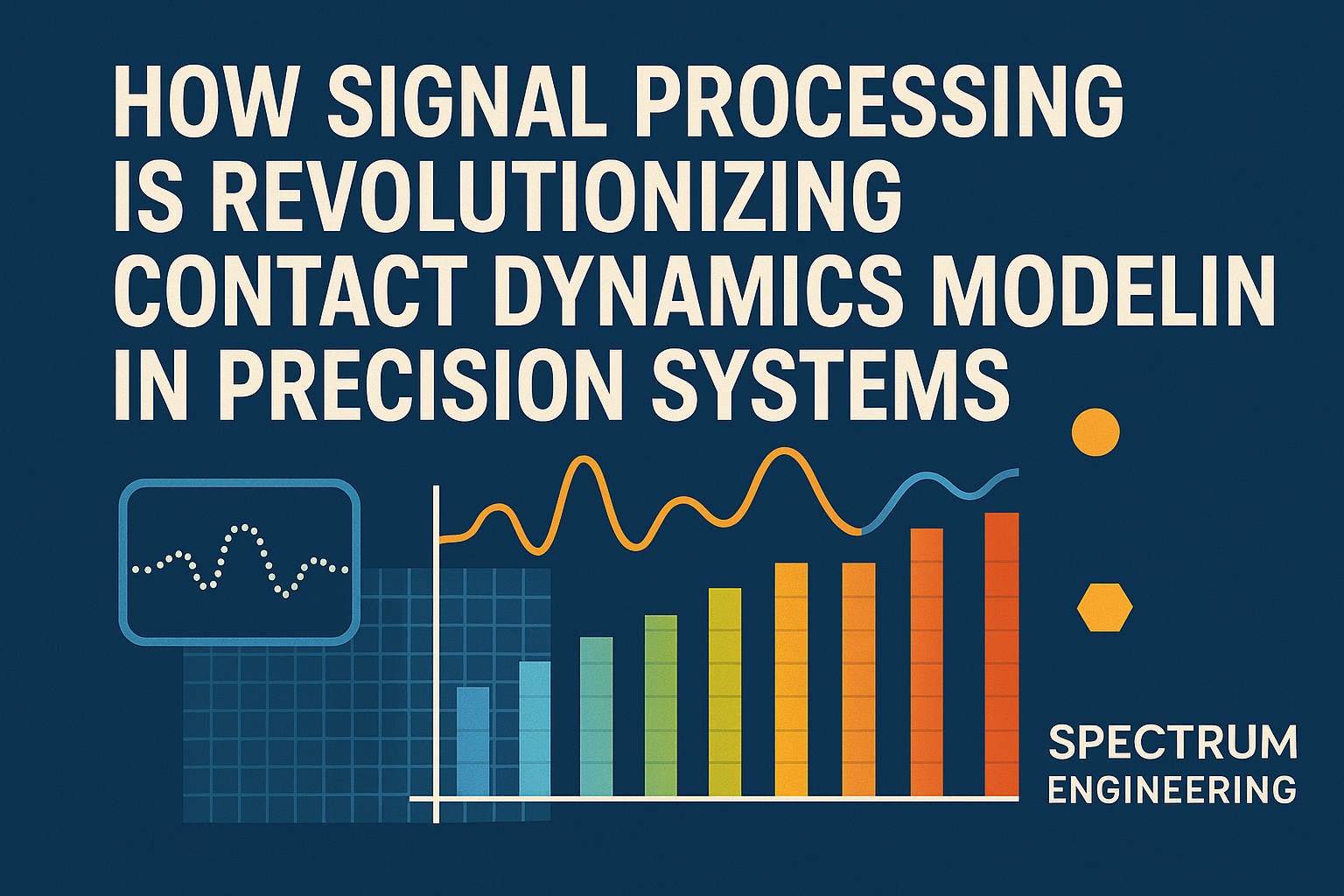How Signal Processing Is Revolutionizing Contact Dynamics Modeling in Precision Systems

In the world of high-precision engineering—where motions are measured in microns and milliseconds—the internal forces generated through contact, such as friction and elastic stiffness, are highly nonlinear and can no longer be simplified. Traditional control approaches often fail to capture these complexities accurately.
But, Signal processing techniques—like Hilbert transform–based force decomposition—are revolutionizing contact dynamics modeling by enabling engineers to isolate and quantify these internal forces in real time. This allows for more accurate modeling and control of precision systems, leading to better performance, reduced vibration, and improved positioning accuracy.
In this blog, we will explore how Signal processing consulting services by Spectrum Engineering can transform contact dynamics modeling in precision systems. Let’s dive in!
The Challenge of Contact Dynamics in Precision Systems
From semiconductor wafer stages to robotic joints and precision actuators, modern motion platforms demand extreme accuracy, even in the submicron range. But, achieving that level of control is not just about better hardware. It’s also about understanding and compensating for contact dynamics: the internal forces like friction and stiffness that arise when two components slide or press against one another.
These forces are often nonlinear, varying unpredictably with speed, displacement, and time. They can distort feedback, create instability, and degrade system performance—especially in systems using direct-drive stages and linear actuators.
For years, engineers relied on simplified models or lookup tables for these forces. But such models fall short when dealing with the complexity of presliding friction, hysteresis, and viscoelastic behavior that appear in real-world applications.
Signal Processing: A Game-Changer for Modeling
Recent research, such as the study Identification and Modeling of Contact Dynamics of Precise Direct Drive Stages co-authored by Spectrum Engineering, has showcased the potential of advanced signal processing techniques to overcome these modeling challenges.
Using techniques like the Hilbert transform, engineers can now extract hidden features from measured signals—such as position, velocity, and acceleration—and use those to identify nonlinear components of internal forces in real time.
Here’s how it works:
- Phase Analysis: Examine the phase shift between excitation force and displacement. It allows separating internal forces into stiffness (elastic) and friction (damping) components.
- Hilbert Vibration Decomposition (HVD): This technique breaks down complex signals into their frequency components. This enables the identification of subtle variations in stiffness or damping that would be missed in traditional analysis.
- Congruent Force Mapping: Once signals are decomposed, multiple components can be recombined to model the full, nonlinear behavior of a contact system—whether it’s under micromotion (tiny vibrations) or macromotion (larger, sliding movements).
These methods allow engineers to go beyond traditional friction models and build adaptive control strategies that respond dynamically to changing system behavior.
Practical Impact: From Research to Reality
The experimental results discussed in the paper highlight how slow, quasi-harmonic excitations were used to analyze the nonlinear behavior of a wafer positioning stage. The results showed that friction and stiffness respond differently depending on motion conditions, making it essential to model both precisely to maintain accuracy and stability in precision systems.
By applying these insights through their signal processing consulting services, Spectrum Engineering enables clients to:
- Extend the life of mechanical components by reducing wear from uncontrolled friction.
- Improve positioning accuracy in critical systems like robotic arms, inspection platforms, and surgical equipment.
- Reduce development time by identifying system dynamics early in the design cycle.
How Spectrum Engineering Delivers Real-World Signal Processing Solutions
Here’s how Spectrum Engineering delivers real-world signal processing solutions in precision systems:
- Real-World Friction Compensation
They help clients develop friction compensation algorithms that adapt to nonlinear and time-varying behaviors. Whether you’re dealing with dry friction, viscous damping, or stick-slip effects, they use signal decomposition techniques to model these dynamics accurately.
- Automatic Parameter Tuning
Many systems suffer from performance issues due to poorly tuned control parameters. Their tools use signal feedback to automatically identify stiffness and damping profiles, then adjust controller settings accordingly.
- Sensor Noise Filtering
High-resolution encoders are essential in precision systems, but they’re often sensitive to noise. They apply Kalman filters and advanced signal processing to extract clean, reliable signals from noisy environments—resulting in smoother control and higher accuracy.
- Embedded Control Development
They integrate these signal processing tools directly into embedded systems, allowing real-time estimation and compensation without external computation. This is especially useful in cost-sensitive or space-constrained applications.
Final Thoughts
As systems continue to shrink in size but grow in complexity, the traditional trial-and-error approach to control design is no longer sufficient. With the power of signal processing, engineers can now model and manage contact dynamics with a level of precision that was previously unattainable.
At Spectrum Engineering, they’re proud to help clients navigate this new frontier—turning sophisticated data analysis into actionable, embedded control strategies. Whether you’re building a wafer stage, a robotic gripper, or a next-gen actuator, their dynamic systems consulting and signal processing consulting services are here to ensure your systems perform at their peak.




Leave a Comment